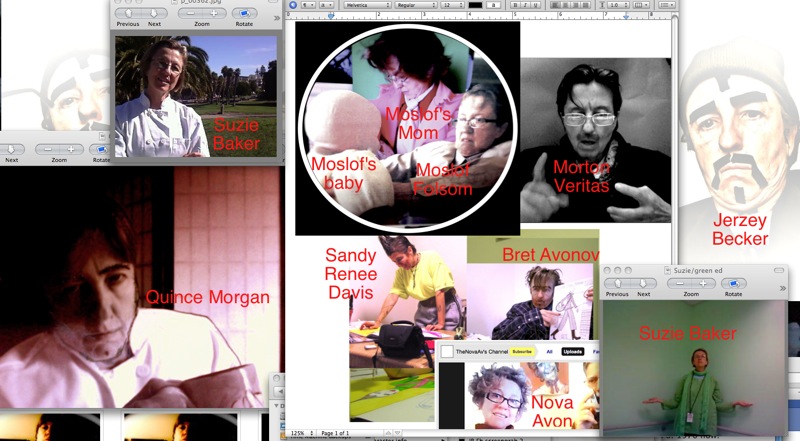Meet Burn Richards. I was thinking of naming him Richard Burns, but I read two Western novels about a cowboy named Burn English, and I loved that character so much that I wanted to give a character his name. (And there are some similarities between the two characters). Then I realized that he could be my character Vel's husband because her last name is Richards. Vel and Burn have a daughter named Joanne. She is played by John Steiner(we made a super8 film of her in 1992 during the Oakland hills fire, called "Evil Sky").

Burn Richards is an independent salesman of office supplies. He hires Nova Avon to do marketing because he sees her ad in a local printed news letter called Pacific News. She comes to his apartment in Colma or Pacifica. His apartment is a throwback to the Perry Mason (or older) days --it is a studio with the bed in the background. Richard looks like a guy from the 50s or 60s with his hair slicked to the side and wearing a suit. Nova wants to set him up on Twitter and Facebook. He is resistant. He is not at all up to date with technology. The only modern thing he has is a senior citizen cellphone that just makes and receives calls--his deceased wife Vel had insisted on him having it out of concern for his safety on business trips. In this scene he gets overwhelmed and tries to sell Nova a nice portable file organizer--which she refuses because she keeps everything in her laptop, Blackberry phone, and digital clutch. He is in a state of slight disorientation and his identity is fractured or disrupted because of his grief and shock at losing his wife five years ago. The scene resolves with them having tea and Nova being compassionate. He decides to attend the free computer classes at SF Public Library.
Burn Richards is played by Andy Burns.
An additional essay:
Burn and Technology
...background thoughts for what happens in the scene with Nova.
Burn found himself thinking of a bird flying on a diagonal, from lower right to upper left, and how the presence of that bird added an important dimension or texture to the scene behind it. He wondered why he would think of it at this very moment, when the situation he was in was not at all related to birds, landscapes or nature. It had happened to him before, when he was entangled in technology-related pressures. He would never understand that it was his psyche's way of countering the ideological disorientation that the modern digital society caused him. It really was so far out of his realm of indoctrination that it was truly impossible for him to adjust. It wasn't that he had a mental block toward the idea of it all, like so many people of his generation who, once they made a little effort, could easily master the basics of e-mail, cellphones, and text messaging. His problem was in the fundamental physical interface between people and machines that required the digital intermediary idea. He was a person who depended on the messages and textures of person-to-person communication: the eyes, face, body postures, and all of the accompanying motions. He tolerated telephones because he could feel the grain of the other person's voice; he appreciated handwritten letters because he liked that the words were traces of the sender's hand movement. He had been OK with messages created on typewriters because he thought of fingers tapping on keys and handling the sheet of paper, rolling it out of the machine...but he never received them anymore. Faxes were OK-to-neutral for him; he liked when parts were written by hand, even if only on the cover sheets, and at least they were handled by a person as they were scanned into or came out of the machines. He put up with answering machines, voice mail, and his simple cell phone only because he had to in order to do his job. Now there was more and more pressure to use e-mail, and he hated it. He had to get a computer and use the e-mail account that his company assigned to him, and he was required to check it daily. Each time he sat in front of the screen, he felt dizzily disturbed. He felt that the type in e-mail messages was too similar to all of the other graphics on the pages, and the first time he opened his e-mail he could not even understand where the body of the e-mail message was. His daughter Joanne had to help him several times before he got the hang of it. At age 43, she had not grown up with this technology the way kids were doing nowadays. She was good natured with him about it even if she did giggle to herself about some of the goof ups he did. This Nova Avon reminded him of his daughter.

No comments:
Post a Comment